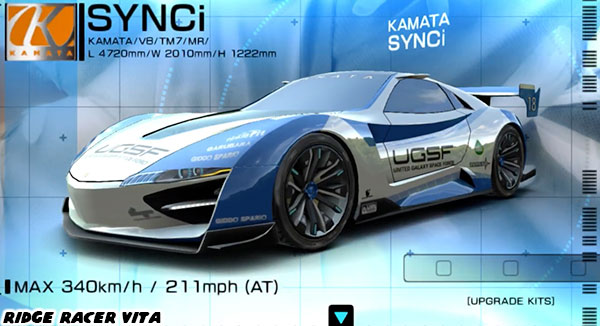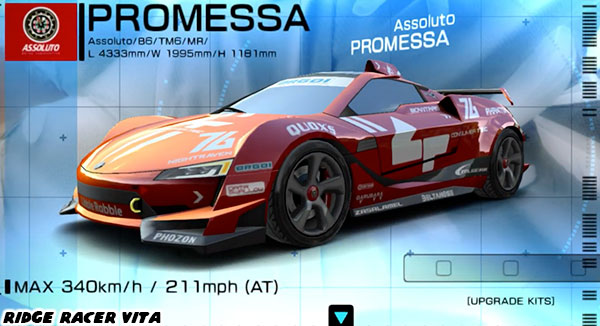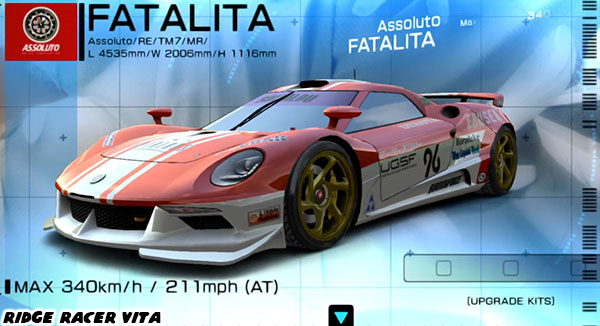Great design is timeless. Great design changes the way that people look at the world. From a well designed set of silverware to a well designed office building. Great design is hard to ignore. It influences language, art, music and culture itself. I'm sure that the reader wishes that many of the weapons and vehicles they saw in movies were real. After all, who would not wish to own a Lightsaber from Star Wars, or a Light Cycle from Tron? The same rule applied to great design from video games.

Early on in this series I mentioned how influential artists like Scott Robertson and Daniel Simon were to films and gaming. Even cartoonists Dave "big" Deal, Ed "Newt" Newton and Japanese illustrator Yasuhiro Nakamura had a profound affect on the way vehicles were presented. The artists, animators and modelers that had worked at Namco were almost as influential, especially over the past 20 years. Many cars that they developed for the series were gorgeous. If I were a lottery winner there's no doubt that I would commission a speed shop to recreate a few cars for my collection. In Japan one company did live out the dream. The Yamasa featured as a Special Class car in Ridge Racer 2 for the PSP was a high performance version of the Soldat Raggio. It had the distinction of being the only Ridge Racer car to be produced in real life. The platform it was built from was actually an Acura NSX. It debuted to rave reviews at the 2006 Tokyo Auto Salon. The Auto Salon was an after market parts expo and showcase, not unlike the trade show event organized by
SEMA in the US.

Pachislot manufacturer
Yamasa picked up the bill for the recreation. They actually toured it around the country and raced it on occasion. The car actually performed better than the Acura it was built from. It gave credibility to the designs that Namco had been introducing to the genre. The cars did more than look good, they had functionality. They were well balanced, not just in the sense of symmetry but also for weight distribution which could help in the performance on a race track. The best designs in the series were not solely for the sake of eye candy. The artists updating the legacy cars in the series were dedicated gear heads. They wanted to introduce cars into the game that were aesthetically pleasing and could convince gamers that they would be real world screamers. Some of the designs were reminiscent of the best concept cars developed by the industry. In fact some of the designs predated the concept cars themselves. Such was the case for the Assoluto Promessa. The third generation Promessa debuted in Ridge Racer for the Vita in 2011. It predicted the radical "slingshot" design of the Toyota FT-1 Concept by two years.

Both cars were seamless with a minimal if nonexistent body and roof line. The cars also had curves and intakes that mimicked Formula-1 aerodynamics. Both cars were presented with highly tuned small engines. They could have great horsepower without being excessive on fuel consumption. Both cars also had radical ideas on feeding information to the driver. The FT-1 had its side view mirrors suspended from the doors via aerodynamic wings and had a heads-up display, like a fighter pilot, in front of the steering wheel. The Promessa had roof-mounted side view cameras shaped like tiny ailerons which fed the position information to a display, also in front of the driver.

When the Ft-1 was designed Toyota sent the specs and computer data to Polyphony Studios in Japan. The team that created the Gran Turismo series had created a game engine that was eerily good at predicting the performance of real and concept cars. Toyota would be able to put the FT-1 through the "shakedown" phase without risking a crash. A little known fact was that the engine in the FT-1 concept car that was shown at the car shows was a mock-up. There was a small electric motor from a golf cart that was used to move it around. Polyphony would be able to put in a real engine and see what the car was capable of with different gears and transmissions. While car fans may never see either concept car in person they could at the very least drive them in a favorite game. The FT-1 was made
available as a free download in Gran Turismo 6 at the start of 2014. The Assoluto Promessa was featured in Ridge Racer 2 as well as in
Ridge Racer Vita some years prior.

The designers at Namco never took the selection of cars in Ridge Racer too seriously. The enormous but agile cars from Danver mentioned in the previous blog were a testament to that. The designers wanted to remind audiences that just about anything was possible in their world. When it came to cars you could never judge performance by looks alone. The Angel 0 and Devil 13 cars represented the pinnacle of race engineering yet they sometimes had tiny dopplegangers in the series as well. The diminutive Scootacar from England was the inspiration for the Ecureuil in Ridge Racer Type 4. The petit car weighed next to nothing and had only one gear. Yet the setting of that gear was GO. It accelerated like the Angel and took corners like the Devil. The ability to keep audiences guessing as to what the next car would look like was something that the designers seemed to revel in. When players unlocked the Ecureuil I'm certain that many thought there must have been some sort of mistake. Surely nothing that small could stand a chance on the road. Once they tried it out there was no way they would doubt the creative capacity of the Ridge Racer team.

Namco learned early on that they would have to keep the series fresh by introducing it to mobile platforms. Sony always worked closely with the company to insure that the Playstation would always get at least one exclusive release. When the studio announced the PSP handheld and later Vita systems then audiences could guess that Ridge Racer was not far behind. Some of the most innovative periods of the series took place on handheld systems. The next blog will highlight these entries.
If you would like to sponsor me
please visit my Patreon page and consider donating each month, even as little as $1 would help make better blogs and even podcasts!




Have you seen this? It's called Drift Stage and it's basically Ridge Racer with the '80s neon turned up to 11.
ReplyDeletehttps://www.youtube.com/watch?v=794NSkRWQJ0&feature=youtu.be